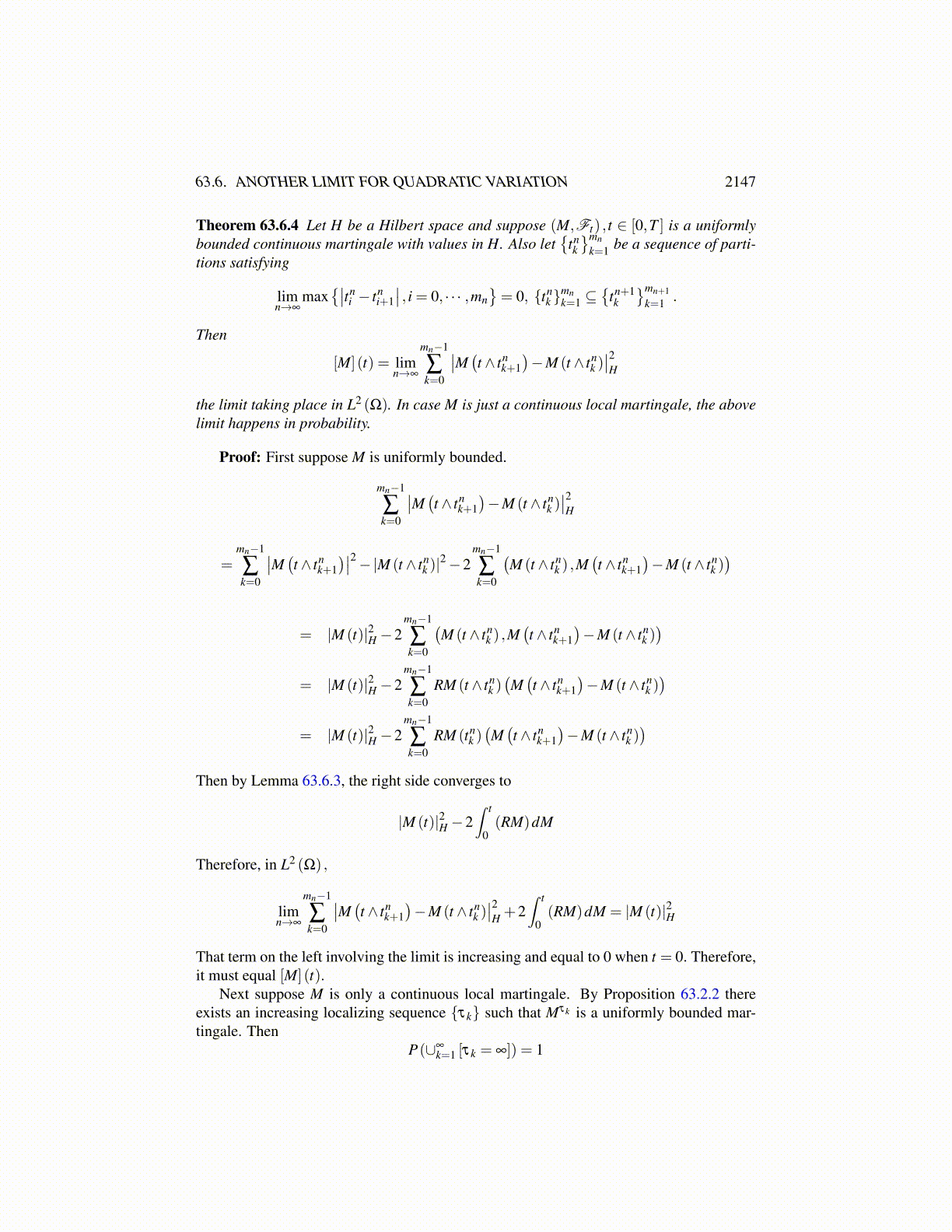
63.6. ANOTHER LIMIT FOR QUADRATIC VARIATION 2147
The inequality 63.6.24 shows that this definition is well defined. So what are the prop-erties of the integral just defined? Each
∫ t0 fndM is a continuous martingale because it is
the sum of continuous martingales. Since convergence happens in L2 (Ω) , it follows that∫ t0 f dM is also a martingale. Is it continuous? By the maximal inequality Theorem 62.9.4,
it follows that
P
([sup
t∈[0,T ]
∣∣∣∣∫ t
0fmdM−
∫ t
0fndM
∣∣∣∣> λ
])≤ 1
λ2 E
(∣∣∣∣∫ T
0( fm− fn)dM
∣∣∣∣2)
≤ 1
λ2 E(∫ T
0∥ fm− fn∥2 d [M]
)and it follows that there exists a subsequence, still called n such that for all p positive,
P
([sup
t∈[0,T ]
∣∣∣∣∫ t
0fn+pdM−
∫ t
0fndM
∣∣∣∣> 1n
])< 2−n
By the Borel Cantelli lemma, there exists a set of measure zero N such that for ω /∈ N,{∫ t0 fndM
}is a Cauchy sequence. Thus, what it converges to is continuous in t for each
ω /∈ N and for each t, it equals∫ t
0 f dM a.e. Hence we can regard∫ t
0 f dM as this continuousversion.
What is an example of such a function in GM?
Lemma 63.6.3 Let R : H→ H ′ be the Riesz map.
⟨R f ,g⟩ ≡ ( f ,g)H .
Also suppose M is a uniformly bounded continuous martingale with values in H. ThenRM ∈ GM .
Proof: I need to exhibit an approximating sequence of elementary functions as de-scribed above. Consider
Mn (t)≡mn−1
∑i=0
M (ti)X(tni ,t
ni+1]
(t)
Then clearly RMn (ti)M∗ ∈ L∞ (Ω) and so in particular it is in L2 (Ω) . Here
limn→∞
max{∣∣tn
i − tni+1∣∣ , i = 0, · · · ,mn
}= 0.
Say M∗ (ω)≤C. Furthermore, I claim that
limn→∞
E(∫ T
0∥RMn−RM∥2 d [M]
)= 0. (63.6.26)
This requires a little proof. Recall the description of [M] (t) . It was as follows. You con-sidered
Pn (t)≡ 2 ∑k≥0
((M(t ∧ τ
nk+1)−M (t ∧ τ
nk)),M (t ∧ τ
nk))